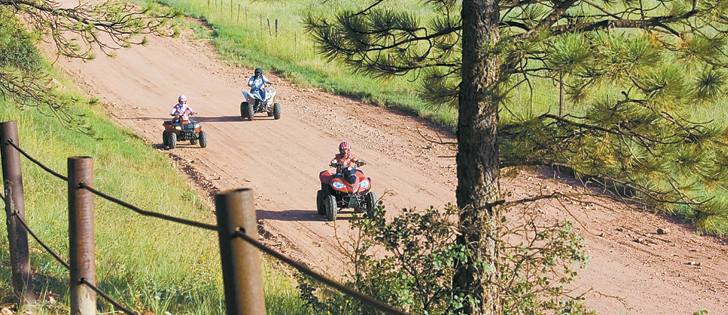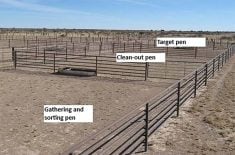Winter anglers come in a couple of types. Some of the more risk-tolerant go out while the ice is still new. Most will wait for a few more deep freezes before trying their luck for the first time in a season.
For a safe and fun season, here are a few factors that aspiring anglers will want to think about.
The work starts before you get near the ice.
Read Also
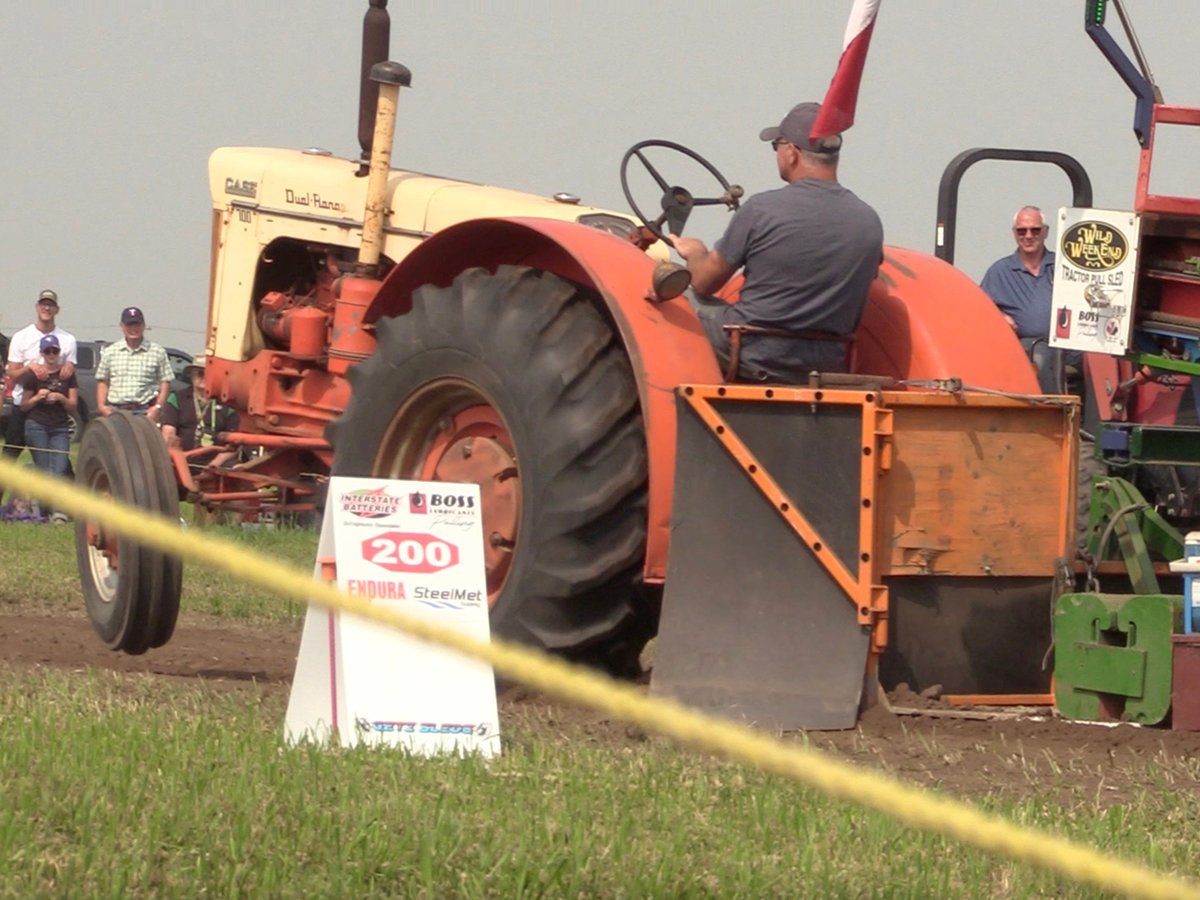
Vintage power on display at Saskatchewan tractor pull
At the Ag in Motion farm show held earlier this year near Langham, Sask., a vintage tractor pull event drew pretty significant crowds of show goers, who were mostly farmers.
I inspect my gear before the first trip. My gas-powered ice auger gets an oil change, is filled with fresh, premium gas and test fired. If the blades didn’t end last season in top shape, they go to a trusted sharpener.
My tent gets set up at home to check for problems and mice. I look over all the seals on my sunflower heater, which mounts on a small propane tank, and give that a test fire as well. Any additional hoses to the heater are checked for leaks.

Unless they need a whole replacement, I cut about three metres of line off all my reels before retying snaps and leaders. I use mostly braid lines — I find they don’t deteriorate as much as monofilament — but there can still be nicks or knot fatigue. Start the winter with fresh knots and you’ll have fewer break-offs.
Your transportation also deserves an inspection. ATVS or snowmobiles should have appropriate pre-season checks to ensure peak running condition. A breakdown on the ice isn’t just irritating; it can be dangerous.
As winter progresses and thicker ice allows car or truck use, pack a good shovel and tow strap. Flimsy plastic shovels won’t cut it in crusted snow. I also have sections of old carpet that I use as traction mats to help get a vehicle moving. Travel with at least one other vehicle so there is extra help if someone gets stuck.
Whether you walk, ride or drive, take enough extra clothes to withstand bad weather for a period of time.
First ice considerations
Winter weather and ice conditions make this an inherently risky activity, and the risks are magnified early in the season.
Personally, I will fish early, but my ice-testing habits were learned from trapping mentors who were on the ice from fall through to spring.
I recommend starting with the following guideline: wait for 10 centimetres of new ice before walking on.
I wear strap-on ice cleats to minimize slippage and hang small, hand-sized ice picks on a tether around my neck in case I do go in. My gear sled is pulled on a long rope so that, if I go through, the weight of the sled could be an assist in getting out.
I carry a long-handled axe or ice-chisel and check the ice with a few swings every 10 metres or so, at least until I have a good idea of the ice situation. Changes in ice colour or structure are red flags.
I was once walking cautiously across new ice and came to a spot where the colour changed abruptly. When I swung my axe into it, the head broke through and the handle slipped from my hand. I quickly retreated. A lost axe was far better than an ice-water plunge.
A few paragraphs of information will not make you an expert at assessing ice. Without experience in these conditions, be patient and wait until there is activity on the lakes you wish to fish. It’s a long winter and there is no need to compromise safety for the sake of being first.
Later in the winter, people will drive out on the ice. I have watched, incredulous, as cars have been driven on as little as 15 cm of ice. General recommendations are to wait for 30-40 cm of good ice before attempting it with a mid-sized truck. I wait for even thicker ice and a well-travelled vehicle track before mine leaves the shore.
Big three
Walleye, pike and perch are the most targeted species by ice anglers. As in open water season, walleye get the lion’s share of attention. Our larger lakes have good populations thanks to more sustainable fishing rules established a few years ago for recreational and commercial fish harvests.
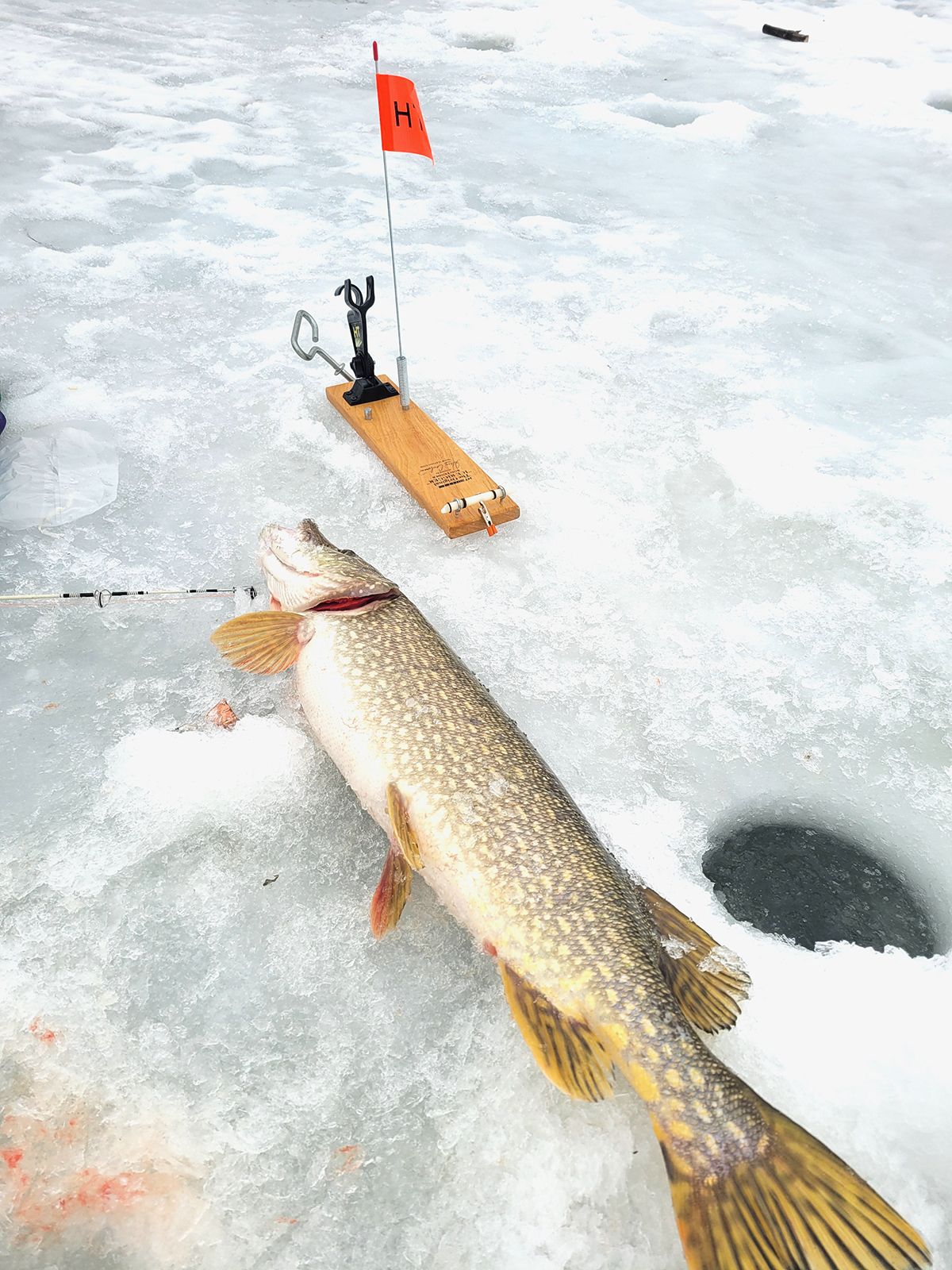
On the subject of flashers or other fish-finding devices, most anglers see them as a necessity. But I also know ardent ice anglers who don’t own them and that are invariably “top rod” whenever we fish together. Personally, I think they are an asset for most and make the day more interesting.
Walleye
The angling world is heavy with how-to articles for catching walleye. I’m far from an expert on the species, but I’ll offer some observations.
Walleye are most active at dawn and dusk. The fancy biological word is crepuscular. Hardcore walleye anglers start their trips in the dark, have lines in the water before sunrise and are often packing up by noon. All else being equal, you can increase your walleye catch simply by getting out of bed early.
The real trick is how to entice a fish that isn’t feeding very much. One winter, I examined the stomach contents from walleye our group had kept. Out of 38 fish, only four had minnow parts.
Research shows fish take up to four days to fully digest a minnow in ice-cold water. When you put the two bits of data together, we can infer that most of our fish hadn’t eaten anything in the previous two or three days.
My takeaway from this little homespun analysis was that walleye don’t strike in winter to fill their bellies. Rather, I think it comes from their inherent predatory nature, a knee-jerk response, if you will. Prey that looks injured or seems to be darting away might offer a trigger.
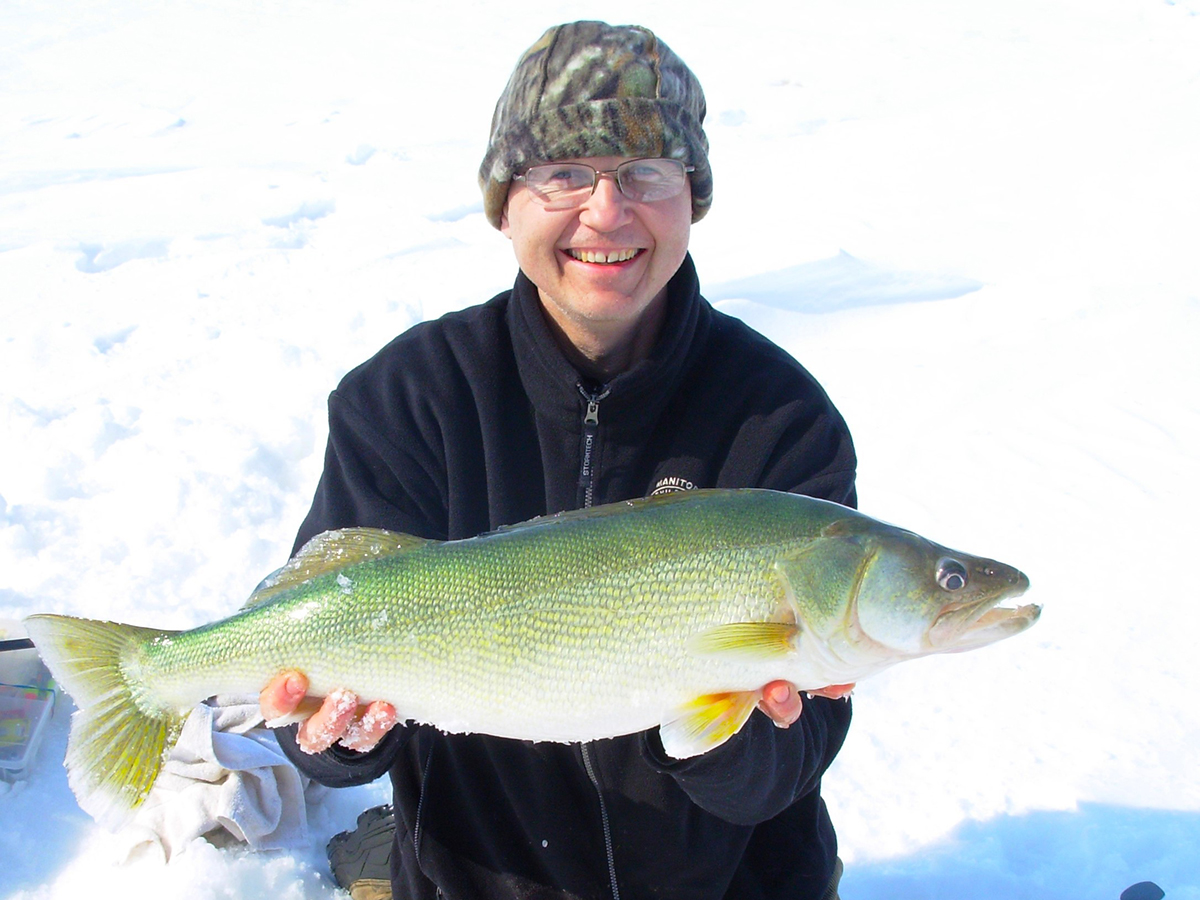
Before I owned a fish finder or flasher unit, one of my ice fishing companions was a professional guide. I noticed that he wasn’t jigging as vigorously as me. In addition to jigging lightly, close to the bottom, he would sometimes slowly lift his bait about 75 cm, pause, jig it a little and then let it drop back down. He was doing much better than me, and I noticed that many of his hits were on the rise or during the pauses.
When you use a flasher unit or an underwater camera, you often first see fish along the bottom. Those fish usually respond more to lures moving away from them than lures that are robotically jigged in front of them. And if you build more pauses into your jigging, expect some hits during those pauses, or on the subsequent lift.
While walleye most often hit lures or baits that have movement, they will also take a stationary minnow. Many anglers actively work one rod, but also have a “dead” presentation — I use a salted minnow on a small treble hook — suspended a bit off the bottom in a nearby hole.
Fish are usually drawn to the jigged presentation, but may end up hitting the stationary bait. Hits on the “dead” stick are usually light, so I rig mine with a slip bobber, which telegraphs even the lightest of hits. It also doesn’t hurt to give your dead line the odd bit of movement.
Pike
Pike are high on my list because they’re more active through the winter. They give an exciting fight and work best for some of my favourite fish recipes. Compared to a walleye’s tentative hit, there is no mistaking when a pike takes a bite.
Larger jigs and jigging spoons are effective. My brother, who mostly fished for pike in western Manitoba’s lakes, especially loved tube jigs and Williams wablers. It doesn’t hurt to tip your lures with a minnow.
For such an active predator, I’m still fascinated that passive approaches, using tip-up rigs and dead baits, are often the most effective. Pre-spawn female pike are bulking up, so goldeye tullibee, large smelt or mackerel in lengths of 13-25 cm, or larger, are often used. Truly massive pike can be caught this way, especially closer to spring.
Standard tip-ups hold baits off the bottom on quick-strike rigs. When a fish starts working the bait, the tip-up trigger pops up a flag and allows line to spool out. The shout, “flag’s up,” is music to a pike angler’s ears.
Wait for the fish to run with the bait for a while. When it stops, it’s time to set the hook. Most tip-ups are designed to have you bring in a fish by hand.
I didn’t bother with tip-ups for a long time because I find it more fun to fight fish on a rod and reel. But when I found a tip-up rig designed for use with an ice-fishing rod, I dove in. This rig combines the effectiveness of large baits and the fun of fighting pike on a rod.
Perch
The unassuming yellow perch are at the top of my target list. They are tasty and can be challenging to catch in numbers. The latter point may raise a few eyebrows because, in the summer, novice anglers can catch perch simply by dangling a minnow off the dock.
Winter perch are much more reluctant, which I understand better after watching them on an underwater camera. My success has improved with a “less-is-more” approach. I catch as many perch with simple, stationary bait as I do from working perch-sized jigs or spoons.
I also find that a minnow head, or the tail and a bit of the body, is more effective than a whole minnow. This has been just as true for large perch as it has been for smaller fish.
The hits are very light, so use a rod with a sensitive tip or a slip bobber rig that is almost neutrally buoyant. I mostly fish with frozen minnows, but perch-sized tube jigs have also worked on my jigged line.
The Prairies have opportunities that lure ice anglers from far and wide.
But before you head out, be sure your gear is in good working order and that you have built the appropriate safety considerations into your equipment and, perhaps more importantly, your mindset.








